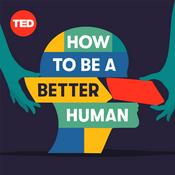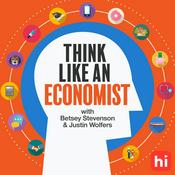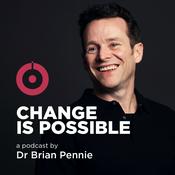Available Episodes
5 of 16
- #016: What makes a great PM in the era of AI?Product management has never been an easy job. But the rise of AI has changed the rules and raised the bar.In this post, we unpack what separates good PMs from great ones today, and why AI will amplify that gap even further.The 6 Core Traits of Great PMsWe started the conversation by listing the timeless traits we’ve seen in standout product managers.* They own problems, not features.Great PMs don’t stop when something is shipped. They stop when the underlying problem is solved.* They think in outcomes, not outputs.Great PMs don’t care too much about building the thing right. They care about building the right thing and they know how to measure its impact.* They think beyond the sprint.Strong PMs can zoom out. They hold a strategic roadmap in their head and adjust it as they learn more.* They collaborate across the product trio.They work deeply with UX and engineering to manage the four product risks: value, usability, feasibility, and viability.* They ship.Strategy without execution is just a deck. Great PMs reliably get things into users’ hand.* They’re curious.Curiosity is what drives the best PMs to go beyond the backlog. They explore ideas no one asked for. They chase problems no one sees yet.The Hard Skills That Can’t Be SkippedWe also added some harder skills that separate truly high-performing PMs:* Data literacy.Not just reading dashboards, but understanding bias, false positives, and what your metrics really mean.* Business acumen.Knowing how your company makes money, what gross vs. net revenue retention is, and how to influence key drivers.* Being easy to work with.Saying no without creating drama. Collaborating with sales and CS without becoming a feature factory. This isn’t “fluffy”, it’s critical.So What’s Changing with AI?Here’s the big shift: AI lowers the floor but raises the ceiling.What gets easier:* Writing specs* Generating test cases* Creating dashboards* Synthesizing user interviewsWhat becomes more dangerous:* Jumping to conclusions from data you don’t really understand* Delegating product sense to a prompt* Acting “strategic” without doing the hard thinkingWhat AI can’t do:* Understand the messy reality of your customers* Discover the root of a real problem* Own a business outcome and make it moveAs Stefan put it: “AI won’t replace PMs. But it will replace the ones who were never really doing the job.”Why Thinking in Outcomes Is Still RareOne of our favorite heuristics:If you haven’t thought about something you launched in the past 2 weeks, you’re probably not outcome-driven.Most PMs live in the future and about what’s next on the roadmap, what’s being released. But very few revisit the past.They treat launches as finish lines. Great PMs treat them as checkpoints.The New Bar for Entry (and Why Juniors Will Struggle)One hard truth we discussed: AI may kill the junior PM role.Entry-level PMs often relied on manual tasks writing tickets, transcribing interviews, summarizing feedback. But those can now be done by AI.This raises the bar for getting into product. But it also creates new adjacent roles:* Setting up AI tools for discovery and prototyping* Creating the infrastructure for prompt-driven interfaces* Curating and structuring data that AI can useFinal ThoughtsPMs who want to thrive in this new era need to embrace one big idea:You can’t outsource product sense.AI will accelerate your work. But it won’t do the work for you. In fact, it will expose anyone faking it.If you want to stay great:* Stay close to customers* Learn how your business makes money* Think in problems, not projects* Use AI—but don’t hide behind itAnd most of all: stay curious.LinksLink to Podcast Episode* 📹 YouTube* 🔊 Spotify* 🔊 Apple MusicIn case you want to reach out, please do so on LinkedIn:* ❤️🩹 Follow Hotfix: https://pal.bio/the-hotfix-podcast* 🎙️ Follow Christoph: https://www.linkedin.com/in/christophbodenstein/* 🎙️ Follow Stefan: https://www.linkedin.com/in/stefan-pernek-629901107/ This is a public episode. If you would like to discuss this with other subscribers or get access to bonus episodes, visit thehotfixpodcast.substack.com--------37:51
- #015: Will PMs, Designers, and Engineers All Merge Into One?In our latest Hotfix episode, Stefan and I explored an uncomfortable question:Are we entering an era where a single person can do the job of an entire product team?Today’s standard setup looks like this:One PM, one Designer, a few Engineers. Clear swim lanes. Frequent alignment.But with AI-native tools like V0, Lovable, and Cursor, the lines are starting to blur. You can build, design, and ship something functional—in days. Without handovers. Without standups. Without a trio.What We’re Seeing:* PMs are suddenly able to prototype full UIs—without Figma.* Designers are writing front-end code.* Engineers are validating ideas with customers—on their own.And maybe most important:The best teams already don’t care whose job something “officially” is.So… What Changes?Stefan believes we’re moving toward “teams of one.” People who ideate, validate, build, and ship solo—with a swarm of AI agents supporting them.I pushed back.Time—not skill—is still the bottleneck. Especially in product roles. Aligning teams, talking to customers, and managing messy orgs isn’t something AI is good at… yet.But we agreed on this:The strongest teams of the future will be generalists—not specialists. People who can think across UX, code, and business. Not deep experts in one swim lane.Who Should Be Worried?🛑 If you only know how to execute what others define—your job is at risk.✅ If you’re curious across disciplines and willing to get your hands dirty—you’ll be fine. Better than fine, actually.Because the bar is rising. Fast.🎧 Full episode: Hotfix 015 – Will PMs, Designers, and Engineers All Merge Into One?Available on Spotify, Apple, and YouTube.LinksLink to Podcast Episode* 📹 YouTube* 🔊 Spotify* 🔊 Apple MusicIn case you want to reach out, please do so on LinkedIn:* ❤️🩹 Follow Hotfix: https://pal.bio/the-hotfix-podcast* 🎙️ Follow Christoph: https://www.linkedin.com/in/christophbodenstein/* 🎙️ Follow Stefan: https://www.linkedin.com/in/stefan-pernek-629901107/ This is a public episode. If you would like to discuss this with other subscribers or get access to bonus episodes, visit thehotfixpodcast.substack.com--------49:32
- #014 w/ Roshan Gupta: Millions of Users. Still a Failure. The Story behind Google Allo.Roshan is the founder of AmplifyPM. Prev. he served as PM at Meta and as a Group PM at Google.Roshan Gupta had the kind of job most PMs dream of: Group Product Manager at Google, leading a 300-person org. Then, he gave it all up.He moved to Portugal and started a one-person company, betting everything on a single idea: PMs don’t fail because of their strategy—they fail because they can’t tell a compelling story.This episode is about two things:* The slow, painful death of Google Allo (yes, that failed messaging app).* And what Roshan thinks is the #1 skill every PM should master: persuasive storytelling.The Messaging App That Was Doomed From the StartIf you don’t remember Google Allo, you’re not alone. It launched in 2016, promised rich messaging, Google Assistant integration, and sleek features. But it never took off.Roshan, who led Allo’s growth, breaks it down simply:“We had a great product. What we didn’t have was distribution.”Allo was competing with WhatsApp in India—a market where SMS used to cost real money, and WhatsApp had already solved that pain. Meanwhile, Allo had to fight its way into phones one by one, even though Google already had Android Messages pre-installed.They tried everything:* SMS relays from a central number (which confused people)* Bundling with Android manufacturers* Targeting specific markets* Google Assistant baked into the appNone of it worked fast enough. And at Google’s scale, millions of users just isn’t enough.“Our growth outpaced Snapchat’s early years. But for Google, it wasn’t fast enough.”In 2018, the team was told to pause development. In 2019, Allo was shut down.Why Storytelling Is the Most Underrated PM SkillRoshan's biggest takeaway wasn’t about messaging apps. It was about people. Specifically, how PMs fail to communicate the value of their work.“There were amazing PMs at Google who didn’t get promoted—not because they didn’t do great work, but because they couldn’t persuade the org.”Roshan says great storytelling comes down to three things:* Clarity – Say one thing, not ten. “Adding more info is like adding water to wine.”* Compelling – Tie your story to something your audience wants. No one changes unless they want to.* Credibility – If people don’t trust you, your story won’t land. Trust is built over time, not in a single meeting.The Spicy Take: PMs Are Bad at Growing PMsRoshan’s new mission is to coach PMs into leadership. And he’s frustrated by how little companies invest in it:“You wouldn’t question an Olympic athlete hiring a coach. But in product, it’s seen as a weakness if you need one.”He argues we’re doing a terrible job building the next generation of leaders. Why?* Most PM skill matrices are vague or unreadable.* There’s no clear roadmap for how to level up.* And storytelling, stakeholder management, and positioning often go completely uncoached.His fix? Amplify PM, a coaching business that helps ICs step into leadership roles—without fluff.The Final LessonAllo failed. But Roshan didn’t. He moved on to lead Google Messages. Then, he walked away to do something that mattered more to him: teaching others how to lead.And if there’s one thing he hopes more PMs remember, it’s this:“Being comfortable with failure is what lets you take the risks that actually lead to growth.”LinksLink to Podcast Episode* 📹 YouTube* 🔊 Spotify* 🔊 Apple MusicIn case you want to reach out, please do so on LinkedIn:* ❤️🩹 Follow Hotfix: https://pal.bio/the-hotfix-podcast* 🎙️ Follow Christoph: https://www.linkedin.com/in/christophbodenstein/* 🎙️ Follow Stefan: https://www.linkedin.com/in/stefan-pernek-629901107/* This is a public episode. If you would like to discuss this with other subscribers or get access to bonus episodes, visit thehotfixpodcast.substack.com--------43:17
- #013 w/ Nesrine Changuel: The story behind Apple reactions in Google MeetNesrine was a Senior PM at Google, Spotify and Microsoft. She’s now a product coach and will be releasing her first book on how to infuse emotional connections into product design by the end of March!In our conversation, Nesrine shared a surprising “failure story” from her time on the Google Meet team.Nesrine’s failure storyNesrine was working on Google Meet as a PM, when COVID broke out. You sure can imagine how intense that time must have been for the team. One day, suddenly a lot of users started complaining. About a new feature that created fireworks and celebratory effects in inappropriate situations. These could have been triggered by raising a thumb for example. In case you’re an Apple user you might have seen them:What wasn’t clear to all users at that time was that this was not a feature from Google Meet.Google didn’t build this fireworks feature. Apple did. Apple’s operating system update enabled these reactions by default, so users naturally blamed Google Meet.The situation sounds like a small thing, but one shouldn’t forget that Google’s products are reaching 100s of millions of users and this impacted core functionality of Google Meet. That means that these reaction were triggered in very inappropriate situations, such as therapy sessions or high-stakes corporate calls. Triggering random fireworks in such situations was anything but delightful.What started as an innocent attempt to introduce delight (from Apple’s side) turned into a big escalation for the Google Meet product team. As soon as the team realized how intrusive and potentially harmful these auto-reactions could be, they tried to explain that this was not a native Google Meet feature and advised users how to turn it off on their Macs.A lesson in how to create product delightCreating product delight is generally a topic that Nesrine cares deeply about. That’s why she also dedicated a full book to it, that will be out soon! Below are a couple of her key takeaways on product delight:* Product delight creates an emotional connection between users and the productProduct delight is created when a product meets its intended purpose (functionality) while exceeding user expectations.* Usually not quantifiableInvesting into delightful features is often not measurable or quantifiable. Integrating playful animations or fun features often doesn’t solve a problem and therefore won’t move any needle in the short term. We btw dedicated a full article + podcast on problem-free product work, in which we also covered UX deligthers: https://thehotfixpodcast.substack.com/p/006-does-every-feature-need-to-solve. Nesrine argues though that emotional features often take longer to show a direct impact on revenue or retention. That means that PMs need to be more patient in measuring usage patterns, and watch loyalty indicators (like referrals and advocacy).* Delight = Joy + SurpriseIn our podcast Nesrine shared a definition of Delight. A truly delightful feature combines surprise and joy. A feature that is only surprising—or only joyful—can end up being distracting or disappointing.* Prioritize with a balanceProduct teams should ideally aim for a balanced combination of Low, Surface, and Deep Delight features in their product roadmap to ensure both functional needs are met and users are emotionally engaged.Nesrine’s arguments on why it makes sense to invest into delighting customers reminded me of this graphic by Casey Winters, that shows why constant UX investments enable companies to keep product-market fit:The gist is that customer expectations keep increasing as the bar for average software is being raised constantly. And competitors also won’t stay still. That means once companies stop investing into UX work they might lose their product-market fit.What Else We Talked About* Functional vs. Emotional FeaturesNesrine explains why some top-performing products (e.g., Spotify Wrapped, Duolingo streaks, Slack’s whimsy) thrive because they provide emotional benefits beyond core functionality.* B2B Can—and Should—DelightEven Jira, the quintessential enterprise tool, invests in delight. Users are humans, regardless of the “B2B” label. Emotional touch points in B2B products can be a massive differentiator.* Motivational InterviewingInstead of directly asking users about “problems,” Nesrine recommends deep, open-ended discovery that uncovers hidden emotional drivers.* Start Small and ScaleYou don’t need to overhaul your product overnight. Dedicate a small percentage of your roadmap each quarter to try simple, delightful additions. Track how your users respond before expanding further.LinksLink to Podcast Episode* 📹 YouTube* 🔊 Spotify* 🔊 Apple MusicIn case you want to reach out, please do so on LinkedIn:* ❤️🩹 Follow Hotfix: https://pal.bio/the-hotfix-podcast* 🎙️ Follow Christoph: https://www.linkedin.com/in/christophbodenstein/* 🎙️ Follow Stefan: https://www.linkedin.com/in/stefan-pernek-629901107/ This is a public episode. If you would like to discuss this with other subscribers or get access to bonus episodes, visit thehotfixpodcast.substack.com--------38:15
- #012 w/ Trisha Price: We Spent Years on an AI Feature—And Still Got It WrongTrisha is the CPO of Pendo.io, one of the most widely used product experience platforms. Trisha brought us a gem of a failure story.Her team has been working on a powerful machine learning future for a long time.The feature was aimed at answering one question:What are the features that drive user retention?Trisha’s failure storyOver the years, Pendo had gathered mountains of product usage data, such as clicks, sessions, outcomes. They even knew which users stayed and which churned. So the idea was to build a machine learning model that identifies what behaviors drive long-term retention.Early results were promising. Some insights made total sense (“creating shared dashboards” was a big one). Others were… surprisingly boring (“visiting the settings page” meant high retention - obvious for administrators). Still, the team pressed on.They iterated on the interface. They brought in new designers. Even the CEO jumped in. But no matter how much effort they put in, something wasn’t working.“We got it wrong. We got it wrong. We got it wrong again.”—Trisha Price, CPO @ PendoEventually, they launched it. And while some users did get value from the feature, adoption was low. Most PMs loved the idea—they just didn’t come back to use it. Trisha and her team were left scratching their heads.Was it the UI? Was it the model? Was it just… too static?Turns out, just knowing which feature drives retention isn’t enough. It needs to be timely, actionable, and trusted. If the insight changes too often, users don’t believe it. If it doesn’t change at all, it’s not useful beyond the first visit.A few things we loved from the conversation🧠 “AI can’t replace taste.”Trisha talked about what Megan Quinn once called taste—the combination of intuition, signal processing, and experience that defines a great PM. AI can help with execution, but it can’t develop taste. That’s why the best PMs are probably sticking around.🎯 “There is no such thing as product strategy.”Or rather—your product strategy is your company strategy. Especially in product-led SaaS companies, the two are often inseparable. Trisha emphasized that if your company strategy is to sell more to happy customers, your product strategy better be about creating those happy customers.💡 “We don’t believe in fixed innovation percentages.”Instead of saying 20% of R&D goes to new ideas, Trisha prefers a more fluid approach: start small, see what sticks, then double down. That’s how they scaled features like Session Replay. It’s also how they’re thinking about future churn prediction features.What else we talked about* Why junior PMs might not actually be PMs yet—and why that’s okay* The changing PM-to-engineer ratio in the age of AI (some teams run on 1:1:1!)* Why product marketing can’t save a weak product, and how PMs sometimes try to offload differentiationListen to the full episode🎧 Spotify📹 YouTube🍎 Apple Podcasts🧠 Follow Trisha: LinkedIn🎙 Follow Christoph: LinkedIn🎙 Follow Stefan: LinkedIn🔥 Follow Hotfix: Linktree This is a public episode. If you would like to discuss this with other subscribers or get access to bonus episodes, visit thehotfixpodcast.substack.com--------40:51
More Education podcasts
Trending Education podcasts
About The Hotfix Podcast
Stories from product leaders and unfiltered truths about products that failed. 💥
Made with ❤️ by Christoph & Stefan thehotfixpodcast.substack.com
Podcast websiteListen to The Hotfix Podcast, How to Be a Better Human and many other podcasts from around the world with the radio.net app

Get the free radio.net app
- Stations and podcasts to bookmark
- Stream via Wi-Fi or Bluetooth
- Supports Carplay & Android Auto
- Many other app features
Get the free radio.net app
- Stations and podcasts to bookmark
- Stream via Wi-Fi or Bluetooth
- Supports Carplay & Android Auto
- Many other app features


The Hotfix Podcast
Scan code,
download the app,
start listening.
download the app,
start listening.



























